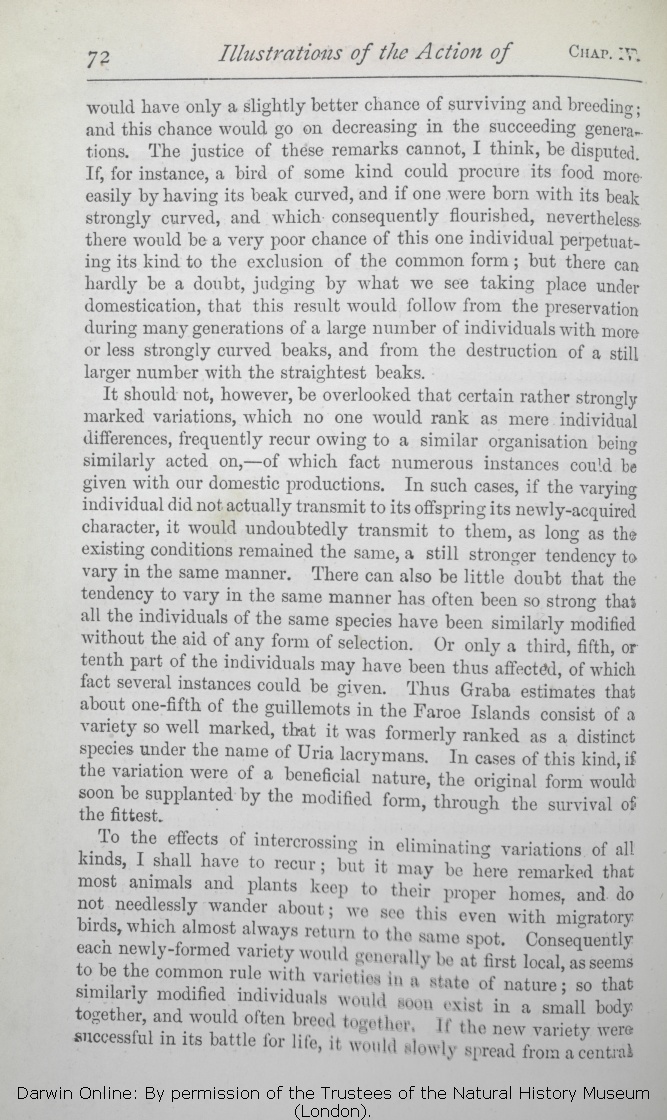would have only a slightly better chance of surviving and breeding; and this chance would go on decreasing in the succeeding generations. The justice of these remarks cannot, I think, be disputed. If, for instance, a bird of some kind could procure its food more easily by having its beak curved, and if one were born with its beak strongly curved, and which consequently flourished, nevertheless there would be a very poor chance of this one individual perpetuating its kind to the exclusion of the common form; but there can hardly be a doubt, judging by what we see taking place under domestication, that this result would follow from the preservation during many generations of a large number of individuals with more or less
strongly curved | strongly curved 1872 | | curved 1869 |
|
It should not, however, be overlooked that certain
rather strongly marked variations, | rather strongly marked variations, 1872 |
| variations, 1869 |
| transmit 1872 | | transmit, 1869 |
| 1 blocks not present in 1859 1860 1861 1866 1872; present in 1869 | | The conditions might indeed act in so energetic and definite a manner as to lead to the same modification in all the individuals of the species without the aid of selection.
|
| Or 1872 |
| But we may suppose that the conditions sufficed to affect 1869 |
| fifth, 1872 | | or fourth, 1869 |
| individuals 1872 | | individuals; 1869 |
| may have been thus affected, of which fact several instances 1872 |
| and several such cases 1869 |
| Thus Graba estimates that about one-fifth of the guillemots 1872 |
| for instance, it has been estimated by Graba that 1869 |
| OMIT 1872 |
| about one-fifth of the guillemots, which all breed together, 1869 |
| ..... 1872 | | well-marked 1869 |
| variety 1872 | | variety; 1869 |
| so well marked, that it 1872 |
| and this 1869 |
| In cases of this kind, 1872 |
| Now, in such cases, 1869 |
|
To | To 1872 |
| With reference to 1869 |
| in eliminating variations of all kinds, I shall have to recur; but it may be here remarked 1872 |
| and of competition, it should be borne in mind 1869 |
|









